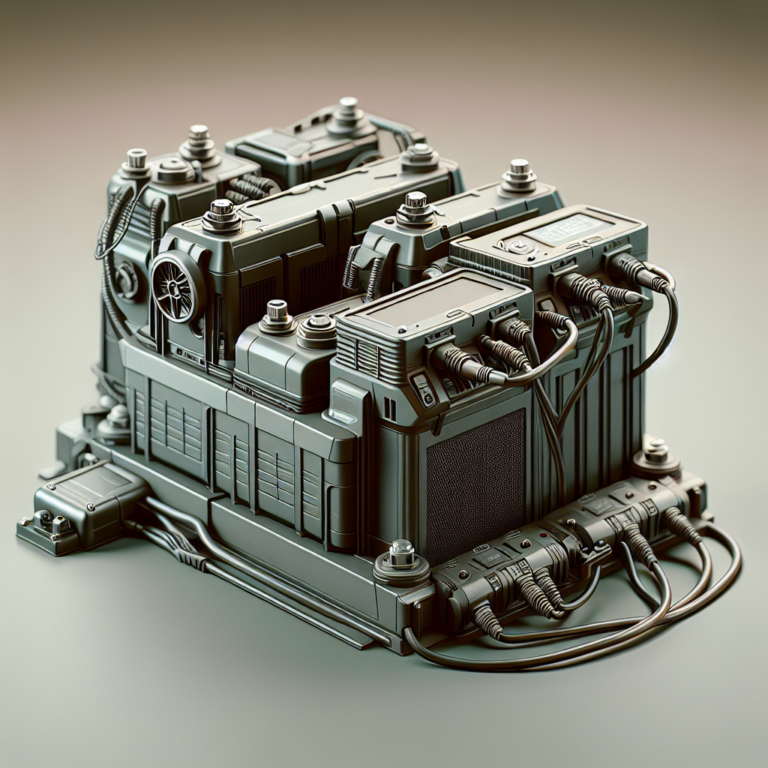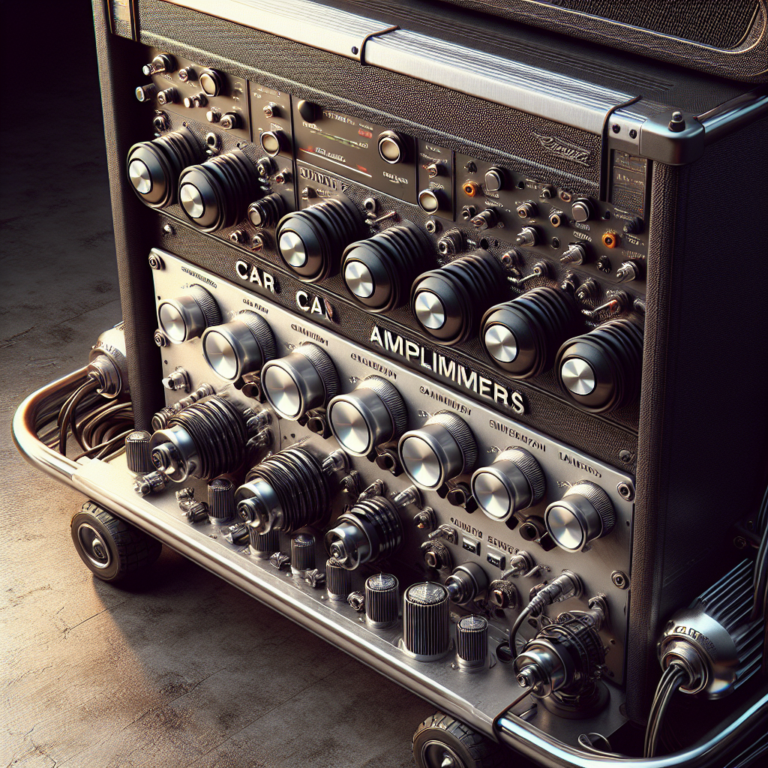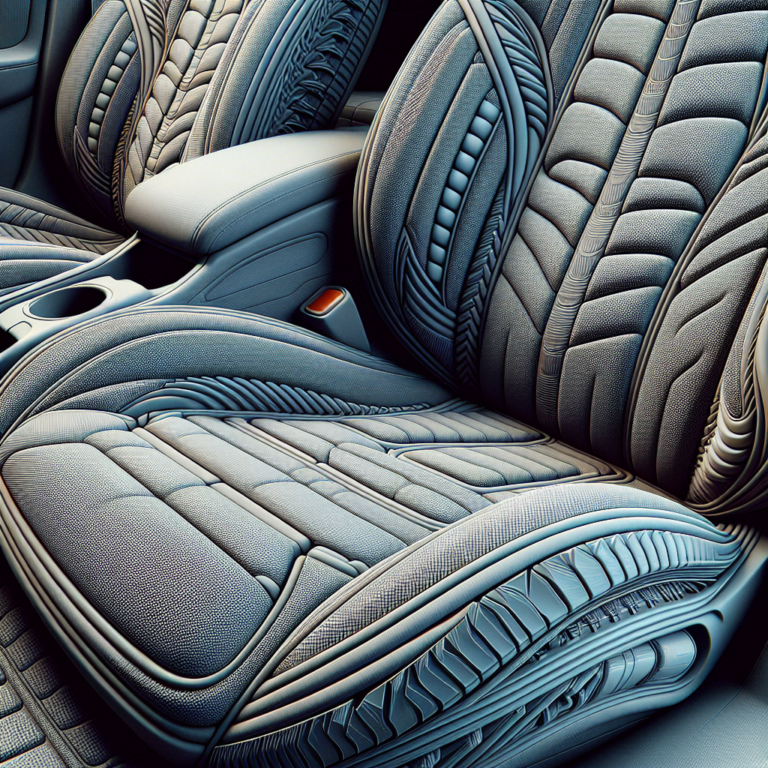Enhancing Your Car’s Potential
When it comes to upgrading the style and performance of your vehicle, one accessory stands out: car roof racks. Car roof racks offer a versatile and practical solution for expanding your car’s carrying capacity. In this section, we will introduce you to the concept of car roof racks and explore how they can enhance both the style and performance of your car.
Introduction to Car Roof Racks
Car roof racks are specially designed structures that attach to the roof of your vehicle. They provide an additional storage space for carrying various items, such as luggage, sports equipment, bicycles, and more. By utilizing the roof space, car roof racks enable you to optimize the available storage capacity of your vehicle.
Car roof racks typically consist of two primary components: roof rails and crossbars. The roof rails are fixed to the roof of your car, running from the front to the back. These rails serve as the foundation for attaching the crossbars, which run perpendicular to the roof rails. The crossbars provide a stable platform for securing and transporting your belongings.
How Car Roof Racks Enhance Style and Performance
Apart from their practicality, car roof racks can significantly enhance the style and performance of your vehicle. Here’s how:
-
Style: Installing a car roof rack instantly adds a sporty and adventurous look to your car. Whether you’re heading to the beach, embarking on a road trip, or simply need extra storage for everyday items, a roof rack gives your vehicle a rugged and purposeful appearance.
-
Performance: Car roof racks allow you to carry bulky and oversized items that may not fit in your car’s trunk or interior. By utilizing the roof space, you can free up valuable cabin space and ensure a comfortable and clutter-free ride for you and your passengers. Whether you need to transport sports equipment, camping gear, or extra luggage, a roof rack provides a practical solution.
To ensure you choose the right car roof rack for your vehicle and needs, it’s important to consider factors such as weight capacity, installation compatibility, and aerodynamics. For a detailed guide on these considerations, refer to our section on considerations for car roof racks.
Car roof racks are a versatile accessory that can truly unlock the potential of your vehicle. They offer a combination of style, convenience, and increased carrying capacity. Whether you’re a frequent traveler, an outdoor enthusiast, or simply in need of extra storage space, installing a car roof rack is a practical and stylish choice.
Types of Car Roof Racks
Car roof racks are a versatile accessory that can greatly enhance the functionality and style of your vehicle. There are several types of car roof racks available, each serving a specific purpose. Let’s explore three common types: roof rails, crossbars, and cargo baskets and boxes.
Roof Rails
Roof rails are the foundation of a car roof rack system. These are long, horizontal bars that run parallel to the sides of the vehicle’s roof. Roof rails provide a sturdy base for attaching other accessories, such as crossbars, cargo baskets, and boxes.
Roof rails come in various designs and materials, including aluminum and steel. They are typically installed as a factory option or added aftermarket. The main benefit of roof rails is their ability to provide a secure and stable attachment point for additional accessories, enabling you to transport various items with ease.
Crossbars
Crossbars are the horizontal bars that are attached to the roof rails. They span across the width of the vehicle’s roof, connecting the roof rails on each side. Crossbars are crucial for creating a stable platform on which you can secure your cargo.
Similar to roof rails, crossbars are available in different materials, such as aluminum and steel. They can be adjustable or fixed, allowing you to customize the width based on your specific needs. Crossbars are designed to support the weight of various accessories, including roof boxes, cargo baskets, and bike racks.
To ensure a proper fit, it’s essential to select crossbars that are compatible with your vehicle’s roof rails. This compatibility will ensure a secure and safe attachment, giving you peace of mind while on the road.
Cargo Baskets and Boxes
Cargo baskets and boxes are popular additions to car roof racks, providing ample storage space for various items. These accessories are designed to securely hold and protect your belongings during transportation.
Cargo baskets consist of a metal frame with open sides, allowing you to easily load and unload items. They are ideal for carrying oversized or irregularly shaped items, such as camping gear, sports equipment, or luggage.
On the other hand, cargo boxes are enclosed storage units that provide protection from the elements. These boxes come in different sizes and can accommodate a wide range of items, including camping gear, skis, and other bulky items.
When selecting a cargo basket or box, consider the size and weight capacity to ensure it meets your needs. Refer to our article on car roof racks for more information on weight capacity and load limits.
By understanding the different types of car roof racks available, you can choose the one that suits your specific needs. Whether you opt for roof rails, crossbars, or cargo baskets and boxes, these accessories can greatly expand the storage capacity of your vehicle, allowing you to transport your belongings safely and securely.
Practical Applications of Car Roof Racks
Car roof racks offer a versatile solution for expanding your vehicle’s storage capacity and accommodating various types of cargo. Whether you’re an outdoor enthusiast or simply in need of extra space for your belongings, car roof racks have practical applications that can enhance your travel experiences. Here are a few common uses for car roof racks:
Transporting Sports Equipment
For sports enthusiasts, car roof racks provide a convenient way to transport equipment such as skis, snowboards, surfboards, and golf bags. By securely attaching the equipment to the roof rack, you can free up valuable interior space and ensure that your gear remains safe during the journey. Be sure to use appropriate padding or protective covers to prevent any damage to your equipment.
Carrying Luggage and Cargo
Car roof racks are ideal for carrying luggage, especially when traveling with a full vehicle. With the additional storage space on the roof, you can easily transport suitcases, duffel bags, camping gear, or any other bulky items that would otherwise occupy precious seating or trunk space. It’s important to secure your belongings properly using cargo boxes, bags, or straps to prevent shifting or damage while on the road.
Hauling Bicycles or Kayaks
For outdoor enthusiasts, car roof racks offer a convenient solution for transporting bicycles, kayaks, or canoes. Roof-mounted bike racks securely hold your bikes in place, allowing you to easily transport them to your favorite cycling destinations. Similarly, kayak or canoe racks provide a stable and secure way to transport your watercraft, ensuring a hassle-free experience when heading out for a day of paddling.
To ensure the safety of your gear and optimize the performance of your car roof rack system, it’s important to consider the weight capacity and load limit specified by the manufacturer. Overloading the roof rack can affect the handling and stability of your vehicle, so always adhere to the recommended limits. For more information on selecting the right car roof rack, check out our article on car roof racks.
By utilizing car roof racks, you can maximize the storage capabilities of your vehicle, allowing for a more comfortable and enjoyable travel experience. Whether you’re embarking on a road trip, heading to the mountains for a skiing adventure, or simply need extra space for your belongings, car roof racks provide the flexibility and convenience you need. Explore the possibilities and make the most of your car’s potential with a reliable and well-suited car roof rack system.
Considerations for Car Roof Racks
When exploring the potential of car roof racks, it’s important to consider several factors to ensure a safe and efficient experience. Here are three key considerations when it comes to car roof racks: weight capacity and load limit, installation and compatibility, and aerodynamics and fuel efficiency.
Weight Capacity and Load Limit
Before loading up your car roof rack, it’s crucial to understand its weight capacity and load limit. Exceeding these limits can compromise the safety and stability of your vehicle. The weight capacity refers to the maximum weight the roof rack can support, while the load limit specifies the maximum weight that can be carried on the rack.
To determine the weight capacity and load limit of your car roof rack, refer to the manufacturer’s guidelines or consult the vehicle’s owner manual. It’s important to distribute the weight evenly and secure the load properly to prevent any shifting or imbalance during transit. Be mindful of the weight of the items you plan to carry and ensure they fall within the specified limits.
Installation and Compatibility
Proper installation and compatibility of the car roof rack are crucial for its functionality and safety. Each vehicle may have specific requirements and attachment points for mounting the roof rack. It’s essential to carefully follow the manufacturer’s instructions during the installation process to ensure a secure fit.
Before purchasing a roof rack, check its compatibility with your specific car make and model. Manufacturers often provide compatibility guidelines or compatibility checkers on their websites. This ensures that the roof rack is designed to fit your vehicle and provides a reliable attachment point for your gear.
Aerodynamics and Fuel Efficiency
Car roof racks can have an impact on the aerodynamics of your vehicle, which can, in turn, affect fuel efficiency. The additional bulk and wind resistance created by the roof rack can lead to increased drag, resulting in higher fuel consumption.
To minimize the impact on fuel efficiency, consider opting for sleek and aerodynamic roof rack designs. These designs are specifically engineered to reduce wind resistance and minimize drag. Additionally, when the roof rack is not in use, consider removing it to improve aerodynamics and save fuel.
By considering weight capacity and load limits, ensuring proper installation and compatibility, and being mindful of aerodynamics and fuel efficiency, you can make the most of your car roof rack. Remember to always prioritize safety and follow the manufacturer’s guidelines for a secure and efficient roof rack experience.
Maintaining and Caring for Car Roof Racks
Once you’ve installed a roof rack on your car, it’s important to properly maintain and care for it to ensure optimal performance and longevity. Regular cleaning and maintenance, along with following safety measures, will help keep your roof rack in great condition. Additionally, if you need to remove and store the roof racks temporarily, it’s essential to do so correctly to prevent any damage. Here are some tips and precautions to consider:
Cleaning and Maintenance Tips
Regular cleaning and maintenance of your car roof rack will not only keep it looking good but also help prevent any potential problems. Here are some tips to keep in mind:
- Inspect for damage: Regularly inspect your roof rack for any signs of damage, such as loose bolts or cracks. Address any issues promptly to prevent further damage.
- Clean with mild detergent: Use a mild detergent and water solution to clean the roof rack. Avoid using abrasive cleaners or brushes that could scratch the surface.
- Remove debris: Remove any dirt, leaves, or debris that may accumulate on the roof rack. This will prevent clogs and ensure that the rack functions properly.
- Check mounting hardware: Periodically check the mounting hardware to ensure they are secure. Tighten any loose bolts or screws as needed.
- Apply protective coating: Consider applying a protective coating, such as car wax, to the roof rack to help protect it from the elements and maintain its appearance. For more information on car wax, visit our article on car wax.
Safety Measures and Precautions
Safety should always be a top priority when using a car roof rack. Follow these safety measures and precautions to ensure a safe and enjoyable experience:
- Weight distribution: Be mindful of the weight distribution on the roof rack. Distribute the load evenly and avoid overloading the rack beyond its weight capacity. Exceeding the weight limit can damage the rack and affect the stability of your vehicle.
- Secure your items: Properly secure your items to the roof rack using appropriate tie-down straps or cargo nets. This will prevent them from shifting or flying off during transport.
- Check for clearance: Before entering garages or low-clearance areas, check the height of your vehicle with the roof rack installed. Be aware of any height restrictions to avoid damage to your car and the roof rack.
- Regularly check attachments: Periodically check the attachments and fasteners to ensure they are secure. Loose attachments can lead to accidents or damage to your vehicle.
- Follow speed limits: Adhere to speed limits and drive cautiously when your vehicle is equipped with a roof rack. High speeds can create wind resistance, affecting the stability of the car.
Removing and Storing the Roof Racks
If you need to remove your roof racks temporarily, follow these steps to ensure a smooth process:
- Consult the manufacturer’s instructions: Refer to the manufacturer’s instructions specific to your roof rack model for proper removal steps.
- Store in a safe location: Find a clean and dry area to store the roof racks when not in use. Consider using a storage bag or cover to protect them from dust and potential damage.
- Label the parts: If your roof rack has multiple components, label them for easy reinstallation. This will help save time and ensure proper assembly when you need to reinstall them.
- Protect the vehicle: Apply painter’s tape on the areas where the roof racks are attached to the vehicle. This will protect the paint from any scratches during removal or installation.
By following these maintenance tips, safety measures, and proper removal and storage procedures, you can keep your car roof rack in excellent condition for years to come. Remember to always prioritize safety and refer to the manufacturer’s instructions for any specific care guidelines for your roof rack model.






